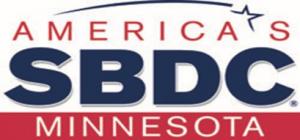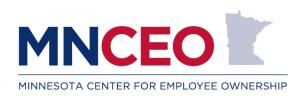North Central SBDC and Minnesota Center for Employee Ownership Launch Rural Business Legacy Initiative
New partnership offers free succession planning and employee ownership resources for rural entrepreneurs
Thousands of Minnesota businesses are owned by baby boomers nearing retirement, many of whom lack a clear succession plan. Without a buyer or exit strategy, some of these businesses face closure or out-of-area acquisition—both of which can have long-lasting economic consequences for rural communities. The new partnership between the North Central SBDC and MNCEO aims to address this growing challenge by providing business owners with the tools they need to transition their companies with confidence and care.
“Your business is your legacy,” said Katie Heppner, regional director of the North Central SBDC. “We want to make sure that rural entrepreneurs aren’t leaving that legacy—or their community’s economic future—up to chance. This partnership gives business owners the knowledge and support they need to understand their options, plan ahead, and make the best decisions for themselves, their employees, and their towns.”
The initiative offers three core services to rural business owners:
• Business Valuation Support – An essential starting point for any transition, business owners will receive expert assistance in assessing the fair market value of their business. This allows them to plan exit timelines, negotiate with potential buyers, or restructure with greater clarity.
• Succession and Legacy Planning – Owners will receive guidance in developing a transition strategy that aligns with their goals. Whether the goal is retirement, reducing operational responsibilities, or ensuring continuity for employees and customers, advisors will help develop a roadmap for success.
• Employee Ownership Exploration – MNCEO provides education and resources on various employee ownership models, including Employee Stock Ownership Plans (ESOPs), Worker Cooperatives, and Employee Ownership Trusts. Business consultants will work directly with interested owners to evaluate whether employee ownership aligns with their values and goals.
All services are provided at no cost and with full confidentiality. Business owners in the region can request services by visiting the North Central SBDC’s website at www.clcmn.edu/small-business-development-center and clicking "Request Services Online."
“This collaboration fills a critical gap in rural economic development,” said Kirsten Kennedy, executive director of MNCEO. “We’re not only helping business owners take control of their succession plans, but we’re also giving communities a powerful tool to retain jobs, stabilize local economies, and keep businesses locally owned for generations to come.”
To learn more about employee ownership and explore additional resources, visit www.mnceo.org or contact MNCEO Executive Director Kirsten Kennedy at kkennedy@mnceo.org.
About the North Central Small Business Development Center
The North Central SBDC, hosted at Central Lakes College in Brainerd, provides free, confidential consulting and training to small businesses and entrepreneurs across a nine-county region of north-central Minnesota. The center is part of the statewide Minnesota SBDC Network, which supports small business growth through expert guidance in areas such as business planning, finance, marketing, and succession planning.
About the Minnesota Center for Employee Ownership
The Minnesota Center for Employee Ownership (MNCEO) is a 501(c)(3) nonprofit organization dedicated to providing free and unbiased information and resources to business owners and their advisors on the benefits of employee ownership throughout Minnesota. Established in 2020, MNCEO is part of a national network of state centers for employee ownership created by the Employee Ownership Expansion Network, which is committed to closing the wealth gap for all employees. For more information, visit www.mnceo.org.
Media Contacts:
Katie Heppner
North Central Small Business Development Center
218-855-8145
katherine.heppner@clcmn.edu
Lee Hayes
Minnesota Center for Employee Ownership
+1 651-261-4356
email us here
Legal Disclaimer:
EIN Presswire provides this news content "as is" without warranty of any kind. We do not accept any responsibility or liability for the accuracy, content, images, videos, licenses, completeness, legality, or reliability of the information contained in this article. If you have any complaints or copyright issues related to this article, kindly contact the author above.
MMI Inc Kitchen and Home Announces Strategic Expansion in Home Remodeling & Renovation
American Manufacturing Association and Frameworks Consortium Announce Premier Texas Manufacturing Conference & Retreat
Redefining Recovery: Daniel Regan’s Healing Us Model Emerges as a Gold Standard for Community Transformation
Więcej ważnych informacji
 Jedynka Newserii
Jedynka Newserii

 Jedynka Newserii
Jedynka Newserii

Handel

Mercosur to tylko wierzchołek góry lodowej. UE ma ponad 40 umów handlowych, które mogą destabilizować rynek rolny
Umowa handlowa między UE a krajami Mercosur może znacząco zaburzyć konkurencję na rynku rolnym i osłabić pozycję unijnych, w tym polskich, producentów – ostrzegają rolnicy i producenci żywności. Umowie sprzeciwia się część krajów unijnych, które domagają się klauzuli ochronnych oraz limitów importowych. – Problemem jest jednak nie tylko ta konkretna umowa. Chodzi o cały system wolnego handlu, który się kumuluje z dziesiątek innych porozumień – podkreśla Andrzej Gantner, wiceprezes Polskiej Federacji Producentów Żywności.
Firma
Dzięki zdalnej weryfikacji tożsamości z wykorzystaniem AI firmy zminimalizowały liczbę oszustw. Rozwiązania wykorzystuje głównie sektor finansowy

Z najnowszych danych Eurostatu wynika, że w 2024 roku 5,9 proc. polskich firm korzystało z rozwiązań z zakresu sztucznej inteligencji. W 2023 roku był to odsetek na poziomie 3,67 proc. Wciąż jednak jest to wynik poniżej średniej unijnej, która wyniosła 13,48 proc. Jednym z obszarów, który cieszy się coraz większym zainteresowaniem wśród przedsiębiorców, jest weryfikacja tożsamości przez AI, zwłaszcza w takich branżach jak bankowość, ubezpieczenia czy turystyka. Jej zastosowanie ma na celu głównie przeciwdziałać oszustwom i spełniać wymogi regulacyjne.
Prawo
Daniel Obajtek: Własne wydobycie i operacyjne magazyny to filary bezpieczeństwa. Zgoda na magazyny gazu poza krajem to rezygnacja z suwerenności energetycznej

Były prezes Orlenu ostrzega przed zmianami w ustawie o zapasach ropy naftowej, produktów naftowych i gazu ziemnego. Jego zdaniem przygotowana przez rząd nowelizacja tzw. ustawy magazynowej i ujednolicanie unijnej polityki energetycznej to zagrożenie dla bezpieczeństwa energetycznego Polski. W jego opinii tylko silna spółka narodowa, własne wydobycie, krajowe magazyny i zbilansowany miks energetyczny zapewnią Polsce bezpieczeństwo i konkurencyjność.
Partner serwisu
Szkolenia

Akademia Newserii
Akademia Newserii to projekt, w ramach którego najlepsi polscy dziennikarze biznesowi, giełdowi oraz lifestylowi, a także szkoleniowcy z wieloletnim doświadczeniem dzielą się swoją wiedzą nt. pracy z mediami.






![Nestlé w Polsce podsumowuje wpływ na krajową gospodarkę. Firma wygenerowała 0,6 proc. polskiego PKB [DEPESZA]](https://www.newseria.pl/files/1097841585/fabryka-nesquik_1,w_85,r_png,_small.png)



.gif)

 |
| |
| |
|